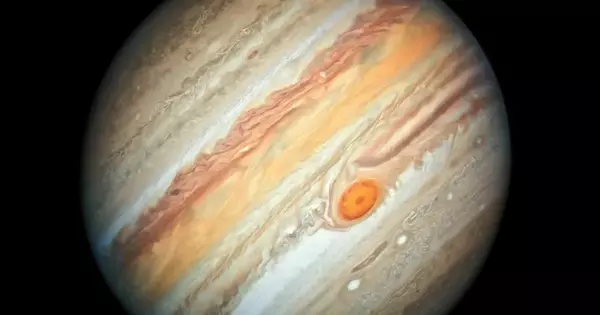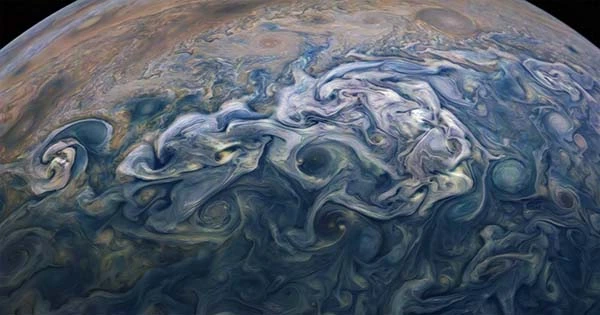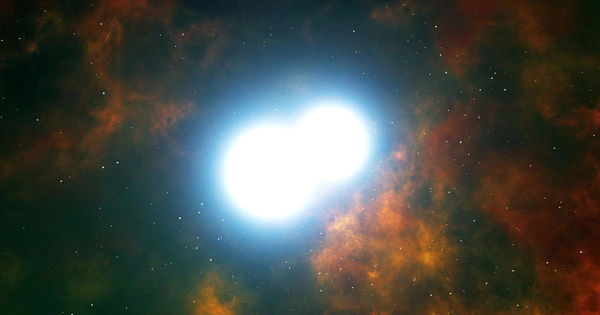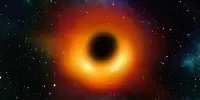A new study discovers that lightning crackles to life and evolves in the same way it does on Earth.
Jovian lightning, which occurs as regularly as it does on Earth, was discovered almost 40 years ago by NASA’s Voyager 1 mission. Back then, the well-traveled probe detected faint radio signals lasting several seconds, known as whistlers, which are caused by lightning strikes. At the time, these lightning strikes established Jupiter as the only other planet known to have lightning strikes besides Earth. Their evolution in the gaseous environment, on the other hand, has perplexed scientists for decades.
A team reviewing data from NASA’s Juno spacecraft, which has been orbiting Jupiter since 2016, has discovered that Jovian lightning occurs in the same “step-wise” manner that it does on Earth. The latest findings reveal that despite their polar opposite sizes and structures — our rocky planet is far smaller than Jupiter and has a solid surface, which the gas giant lacks — the two worlds have the same type of electrical storms.
Lightning strikes on Earth from within turbulent clouds, where upward winds remove water droplets and freeze them into ice, while downward winds send those icy blobs back to the clouds’ bottom. When falling ice collides with rising water drops, electrons are taken from the former, resulting in a cloud with a negatively charged base and a positively charged top separated by insulating air. When these charges accumulate, the well-known lightning bolt zaps within a cloud or, in rare cases, from the base of a cloud to the earth. Previous studies discovered that a similar mechanism takes place in the Jovian atmosphere.

Though lightning strikes on Earth appear to be long, smooth streaks from a distance, scientists know that each flash of electricity is made up of unique stages. Each step emits discrete radio emissions, which are frequently the only means to grasp what is going on inside thunderclouds.
“It was not clear if such stepping process also occurs in Jovian clouds,” Ivana Kolmaová, a senior research scientist at the Institute of Atmospheric Physics of the Czech Academy of Sciences in Prague and lead author of the new study, told Space.com.
This is due to the fact that previous spacecraft that examined lightning on Jupiter — NASA’s Voyager 1 and Voyager 2, Galileo, and Cassini — lacked instrumentation sensitive enough to catch the radio waves in granular detail. However, the Waves instrument on Juno captured ten times more radio emissions than its predecessors. It accomplished this by detecting lightning signals separated by as little as one millisecond, revealing step-like activity in which air in Jovian clouds is charged up and forms lightning – much as it occurs on Earth.
“The most difficult and time-consuming part of the work was searching for lightning signals in the Waves instrument’s records,” Kolmaová explained.
On Jupiter, one such lightning step may be several hundred to a few thousand meters long, although this is difficult to confirm with present Juno data, Kolmaová and her colleagues noted in the new paper.
















